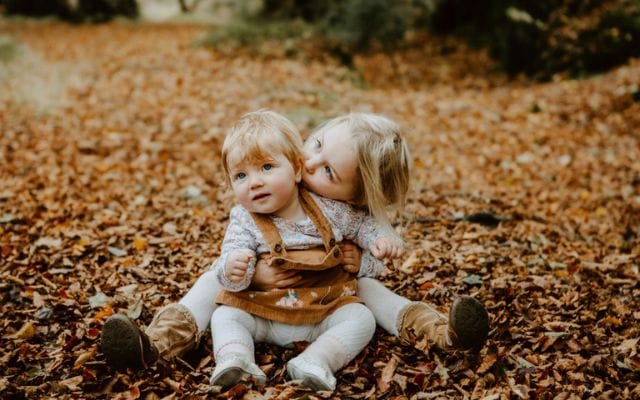
Newborn photography
Introduction: The magic of newborn photography
Newborn photography is a beautiful way to capture the fleeting moments of your little one’s early days. Those tiny fingers, delicate features, and peaceful expressions are treasures that deserve to be immortalized. Each photograph tells a story a snapshot of innocence and love that you’ll cherish forever.
As parents, it can be overwhelming to think about planning a photoshoot with your newborn. But don’t worry! With some thoughtful preparation and creativity, you can create stunning images that reflect the beauty of this special time in your life. Whether you’re teaming up with a professional photographer or tackling the shoot yourself, these essential tips will help ensure that every precious moment is captured perfectly.
Preparing for the shoot: Tips for parents and photographers alike

Preparation is key for a smooth newborn photography session. Parents should create a calming atmosphere at home. This includes dimming the lights and minimizing noise to help soothe the baby.
Photographers need to pack their gear well in advance. Check that all camera equipment, lenses, and props are ready to go. A backup battery can save you during critical moments.
Timing is crucial; plan around the baby’s schedule. Aim for nap times when your little one is most likely to be sleepy and content.
Communication between parents and photographers helps align expectations. Discuss preferred styles, poses, and any must-have shots before the session begins.
Keep essentials handy diapers, wipes, and snacks for both baby and parents alike. A relaxed environment sets the stage for beautiful memories captured on camera.
Location and props: Creating a comfortable and safe environment
Creating the right environment for newborn photography is crucial. A cozy, safe space helps your little one feel secure and relaxed. Choose a location that’s warm and quiet. This will ensure fewer interruptions during the shoot.
Natural light can be magical. Position your setup near a window to take advantage of soft, diffused sunlight. Avoid harsh lighting; it can startle both the baby and the photographer.
Props play an essential role in enhancing your photos. Soft blankets, tiny hats, or cuddly toys can add charm without overwhelming the scene. Always opt for natural materials that are gentle on baby’s skin.
Keep safety at the forefront when selecting props and poses. Ensure all items used are clean and free from choking hazards. Your primary goal should always be comfort both for the newborn and those involved in capturing these tender moments!
Lighting and setting up the shot
Lighting is crucial in newborn photography. Natural light often works best, creating a soft and gentle ambiance that flatters delicate features. Position your baby near a window to take advantage of this beautiful illumination.
Consider the time of day for optimal results. Early morning or late afternoon light tends to be softer and more flattering than the harsh midday sun. If indoor lighting isn’t ideal, use reflectors to bounce natural light onto your subject.
When setting up the shot, keep it simple. Focus on your little one’s expressions and tiny details like fingers and toes. Experiment with angles; shooting from slightly above can capture their innocence beautifully.
Don’t forget about background elements as well. A clutter-free space draws attention back to the baby while enhancing overall composition without distractions. It’s all about finding harmony between light, subject, and surroundings for stunning images you’ll cherish forever.
Capturing those precious moments: Tricks for getting the perfect shots
Timing is everything in newborn photography. Keep that camera ready for the fleeting moments when your little one stretches, yawns, or makes those adorable facial expressions.
Try using a fast shutter speed to freeze these delightful actions. You’ll want to capture every tiny detail without blur.
Another technique is to focus on details like tiny fingers and toes. These close-up shots add depth and charm to your collection.
Experiment with angles too; shooting from above can create an enchanting perspective of your baby nestled in soft blankets or surrounded by props.
Don’t forget the power of candid moments! Sometimes the best images come when you least expect them when parents lovingly gaze at their newborn or siblings share a sweet kiss. Embrace spontaneity; it often leads to the most cherished memories captured on film.
Including family members: Tips for incorporating siblings and parents into the photoshoot
Including family members in newborn photography adds depth and warmth to the images. It’s a wonderful way to capture the essence of your growing family.
Start by planning. Discuss with parents how they envision including siblings or even pets in the shoot. This can make everyone feel involved and excited.
Positioning is key. Have siblings gently interact with the baby, like holding their hand or giving a soft kiss on the forehead. These candid moments reveal genuine affection.
Natural interactions often create stunning photographs. Encourage laughter, silly faces, or simply cuddling together as a family unit; these spontaneous actions lead to beautiful memories frozen in time.
Don’t forget about your parents! Capture those intimate moments between them and their newborn gentle touches, shared smiles, or playful glances that communicate love effortlessly.
Creating an inviting atmosphere will help everyone relax during the session; comfort leads to authentic expressions that shine through every shot.
Safety first: Important considerations when working with newborns
When it comes to baby photos, safety is crucial. These little ones are delicate, and every precaution counts.
Always ensure that the shooting area is warm and free from drafts. Newborns are sensitive to temperature changes, so a cozy environment helps them stay calm.
When posing babies, use soft surfaces like cushions or blankets. This not only provides comfort but also reduces any risk of injury during the shoot.
Keep a close eye on their head and neck support. Always position them in ways that maintain their natural alignment; never force them into unnatural poses for the sake of aesthetics.
Have an adult nearby at all times during the session. It’s essential for monitoring both safety and comfort levels throughout the process.
Be mindful of any props you choose to incorporate. Ensure they are baby-safe and suitable for tiny hands and feet.
Editing and retouching: Enhancing
Editing and retouching are vital steps in the newborn photography process. They allow you to elevate your images, adding a polished touch that enhances their beauty.
Start with basic adjustments like exposure, contrast, and color balance. These tweaks can dramatically change the mood of your photos. Softening skin tones is essential for capturing that delicate newness without losing texture.
Consider using presets or filters as a starting point but remember to maintain authenticity. Each baby has unique features worth celebrating; avoid over-editing.
Don’t forget about cropping! It’s an effective way to focus on those precious details tiny fingers, soft eyelashes, or adorable toes.
Be mindful of preserving the natural essence of each image while ensuring clarity and vibrance shine through. Your goal is to create timeless keepsakes that parents will cherish forever.
How soon should you do newborn photos?

Timing is crucial in newborn photography. Ideally, you should schedule the shoot within the first two weeks of birth. During this period, babies are typically sleepier and more flexible for those adorable poses.
This timeframe allows photographers to capture that precious “newborn” look tiny features and delicate expressions. Babies often curl up naturally during these early days, making it easier to create those heartwarming images parents adore.
However, not every family can manage a photoshoot that soon after birth due to various circumstances. If that’s the case, consider scheduling your session before the baby turns four weeks old. While they may be a bit more alert and mobile by then, you can still capture stunning images that highlight their growth and unique personality.
Always remember: every baby is different; some might be ready sooner than others! Trust your instincts as parents when deciding on the timing for this beautiful experience.
How long should you wait to photoshoot a newborn?

Timing is crucial in newborn photography. The ideal window for capturing those adorable, sleepy moments is generally within the first two weeks after birth. This period allows you to photograph them while they still possess that precious, curled-up look.
Newborns are more flexible and tend to sleep deeply during this time. These factors contribute to those dreamy poses parents often desire. After about 14 days, babies start becoming more alert and less willing to settle into cozy positions.
However, if you miss that early timeframe, don’t fret! Newborn photography can also be done up until three months old with some adjustments in style and technique. Each age brings its charm; just adjust your expectations accordingly.
Understanding these timelines helps ensure you’ll capture the essence of your little one at their most precious stages without stressing over missed opportunities.
Is 3 weeks too old for newborn photos?

Three weeks can feel like a lifetime in the world of newborns. At this age, babies are starting to show their personalities more. Their expressions become more varied, and you might catch a rare smile.
While many photographers prefer to capture those first few days, three-week-old infants can still be perfect subjects for stunning shots. They often have fuller cheeks and an adorable alertness that adds charm to your photos.
That said, some poses may be trickier with older newborns. Babies at this stage are stronger and more aware of their surroundings. It’s essential to adapt your approach based on what they’re comfortable with.
If you’re aiming for sleepy or curled-up poses typical of younger sessions, timing is key. However, don’t hesitate if you missed the earlier window; there’s beauty at every stage in a baby’s life waiting to be captured.
Conclusion:
A lovely method to preserve those ephemeral moments of your child’s early years is through newborn photos. With the right preparation, creativity, and attention to detail, you can create stunning images that you will cherish forever.
By following these essential tips, both parents and photographers can ensure a smooth photoshoot experience. Remember to prioritize comfort and safety for the newborn while also considering unique settings and props to enhance the visual appeal.
Lighting plays a crucial role in establishing mood. Natural light often works best; however, artificial lighting can be adjusted for dramatic effects when done thoughtfully. Always aim for soft illumination that flatters your baby’s delicate features.
Don’t forget about including family members in these precious snapshots. These connections add depth and warmth to each image captured during the session.
Safety should always come first both during posing and when working with equipment. Ensuring that everyone involved feels secure allows for more relaxed interactions among family members.
Post-processing through editing delivers opportunities to enhance colors or remove distractions without losing authenticity in every shot taken.
Timing matters too: ideally capturing newborns within their first two weeks ensures they remain sleepy enough to facilitate those iconic poses many families desire. However, three-week-olds still possess an undeniable charm worth photographing as well!
Embrace this magical period with patience and love as you navigate through creating unforgettable memories together with your new addition!






